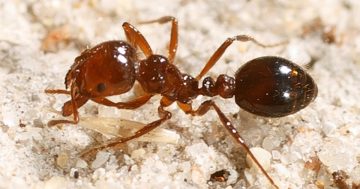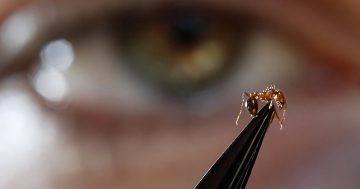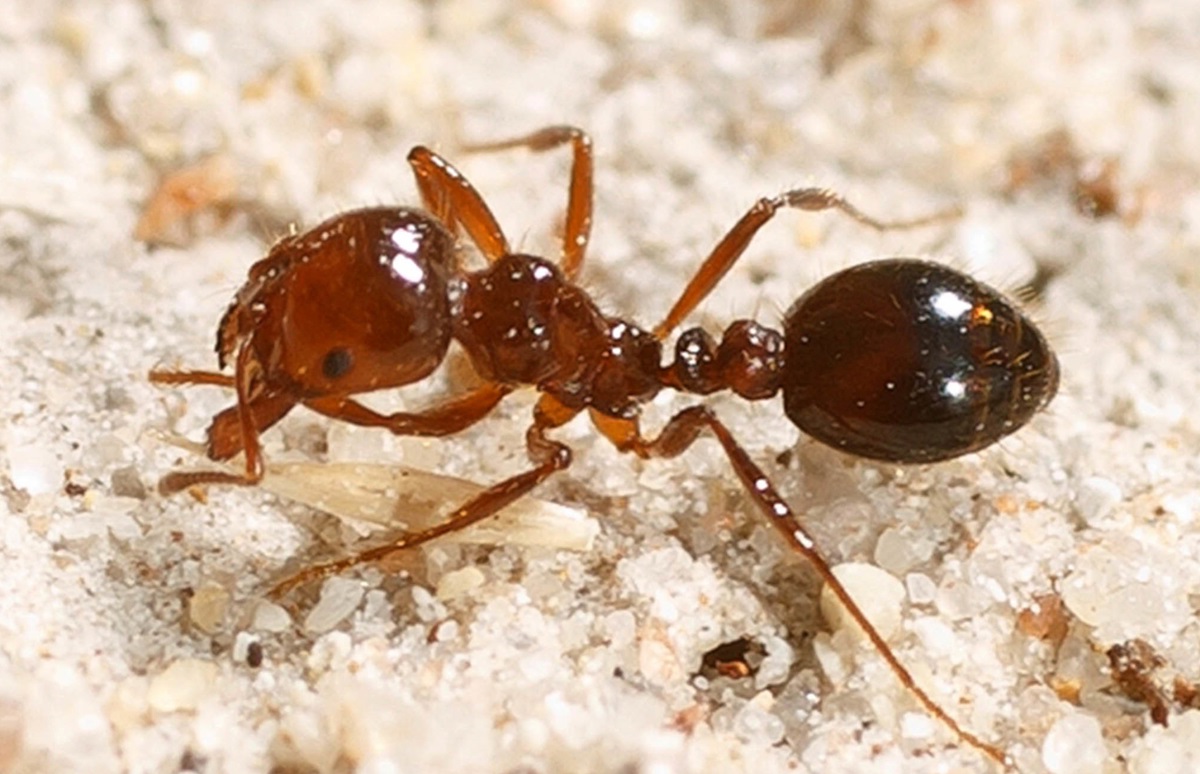
Fire Ants were first discovered in Australia in Brisbane in 2001. Photo: NSW Dept of Primary Industry.
The Australian Defence Force is at the centre of a major biosecurity breach unfolding on Queensland’s Darling Downs after the discovery of at least 110 fire ant nests on the Oakey Army Aviation base, 150 km west of Brisbane.
The detection is 70 km outside the southeast’s current fire ant biosecurity zone, and the furthest west the invasive pest has been found in Queensland, posing a catastrophic risk to the region’s prime agricultural land and multibillion-dollar farming sector.
Local MP Pat Weir told PS News authorities were now grappling with a major biosecurity breach due to the infestation.
“This is not some minor outbreak, this is significant,” the Member for Condamine said.
“There has been a major biosecurity breach by someone, so whoever that is needs to be held to account.”
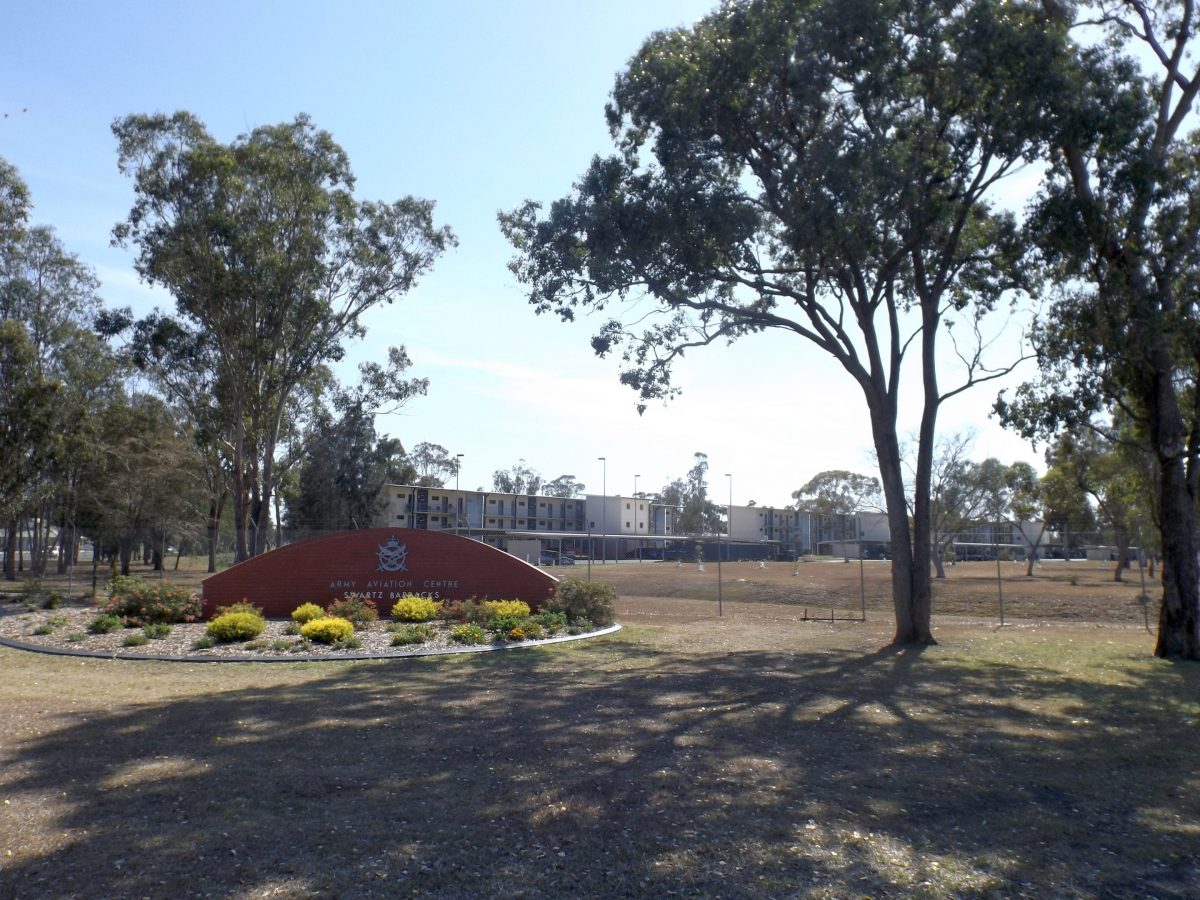
Oakey Army Aviation base: 110 fire ant nests have been located on the site so far. Photo: Supplied.
It’s believed a member of the public initially reported a suspect nest on Tuesday, 16 April. Two days later, authorities were on site treating nests.
A subsequent search located 78 nests, and another 32 were detected yesterday – all within 500 metres of the original site.
“If we’re up to that number, there’s more,” Pat Weir said.
“And they’ve been there for some time, which is another issue. How did they get to this number before they were discovered?”
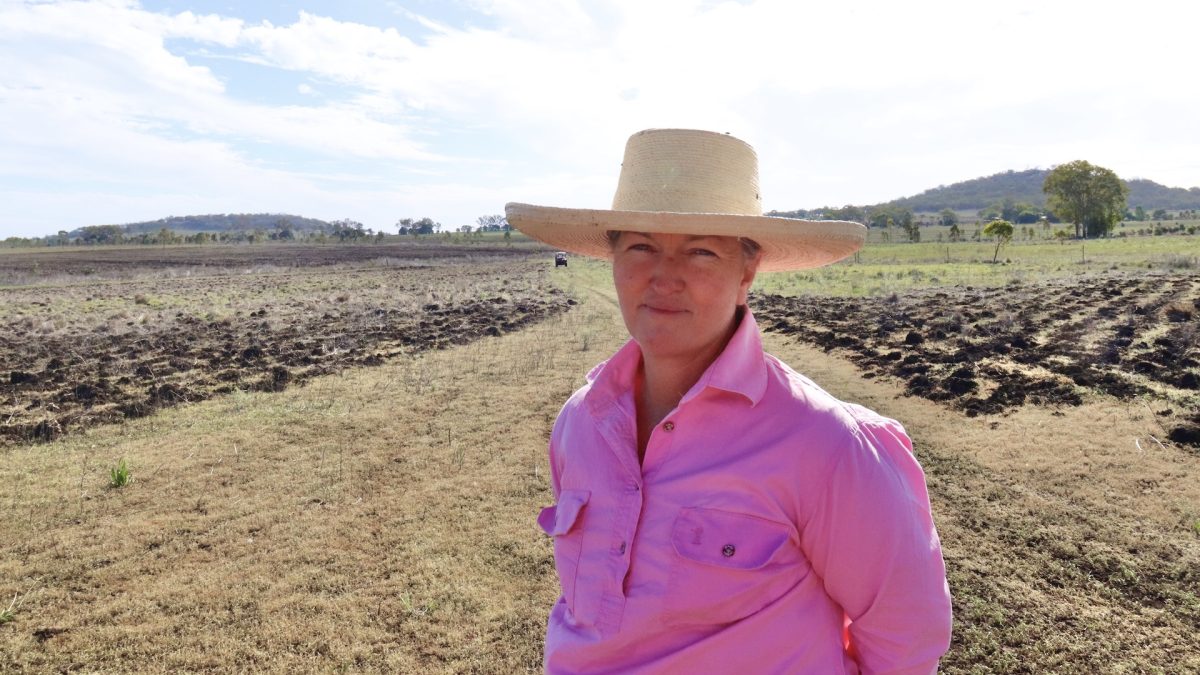
Agforce spokesperson Belinda Callanan: “(Fire ants have) been there for a while, and to go undetected and unreported is pretty devastating, really.” Photo: Supplied.
Queensland’s peak farming body Agforce described the outbreak as a “worst-case scenario” for producers who’ve been wary of fire ants creeping closer to the Downs’ prime agricultural land since a handful of nests were uncovered north of Toowoomba in June last year.
Experts have long feared the impacts of fire ants entering the Murray Darling Basin – Australia’s largest and most complex river system – given they can form floating rafts with their bodies to travel and invade new areas.
“It’s top of the watershed for the Murray Darling Basin, it’s right on the cusp of the Darling Downs’ superb farming area that we’re renowned for, as well as intensive livestock industries right around that region,” Agforce spokesperson Belinda Callanan said.
“It’s a massive concern for our members right across the board.
“Obviously, they’ve been there for a while, and to go undetected and unreported is pretty devastating, really.”
The latest discovery comes just days after a Senate Inquiry into Australia’s National Fire Ant Eradication Program warned of potential annual losses of $2 billion if the pest escapes Queensland’s southeast corner and becomes entrenched.
The invasive species is known to swarm when disturbed and has a painful sting capable of killing livestock and humans and potentially wiping out entire native ecosystems.
In January, Federal and State governments committed $592 million over four years to eradicate red imported fire ants.
Pat Weir has joined the chorus of critics of the National Eradication Program, telling Region that there has been one scathing review after another.
“This has been just an ongoing rolling failure since day one and it doesn’t give you great confidence on security management in [Queensland],” Weir said.
A spokesperson for the National Fire Ant Eradication Program said eradication activities would continue in a 5 km zone from the original detection site, and tracing was underway to determine how the ants arrived in the area.
Defence confirmed the detection of fire ants at Swartz Barracks, Oakey, in a statement to Region.
Specific questions surrounding the emergency response, management protocols, and biosecurity training of base staff were not responded to, with a Defence spokesperson saying Defence supported the Department of Agriculture and Fisheries in relation to implementation of the program.
“Defence is committed to the safety of our people and the neighbouring communities,” the spokesperson said.
“Inquiries in relation to this matter should be directed to the National Fire Ant Eradication Program, Department of Agriculture and Fisheries.”
The fire ant incursion is another significant blow for the Oakey community, which endured years of uncertainty and economic losses after chemicals used in fire fighting foam on the base were found to have leached into groundwater supplies.
Oakey was one of several defence bases caught up in the nationwide PFAS contamination debacle.
“With the PFAS contamination, the base’s reputation took a hit, and unfortunately, now we’ve got fire ants for the first time across the range and on that site, so it’s really disappointing,” Pat Weir said.
For more information about fire ants, visit fireants.org.au.


